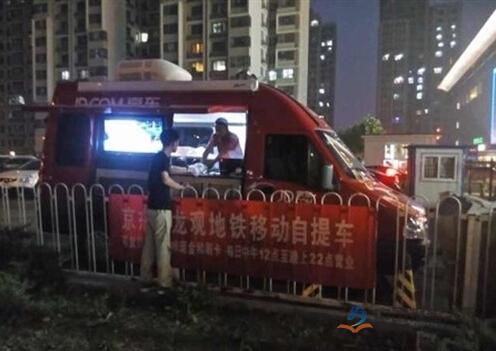Chinese eCommerce Giant JD.com Develops Its Territory Further
JD.com is the second largest B2C online retailer in China. Through 10 years of development, it has become the largest direct sales eCommerce company in China. It now has 46% of the total direct sales eCommerce market share and 47.4 million active users. Further cementing its market-leading position, JD.com successfully listed on Nasdaq in May 2014, with a market value of US$39.3 billion by August 12.
In the past few years, JD.com has made enormous investments in its logistics service to provide fast delivery and a competitive customer experience, including same-day delivery and half-day delivery in selected top tier cities. Recently, it launched a pilot project of mobile self-pickup van in Beijing and Chengdu, giving its delivery service more extensive coverage. When consumers shop on JD.com, they can choose the “self-pickup” option, select their location, and then choose the new “mobile self-pickup” option. By clicking the map under this option, shoppers can see the detailed location and operating time of the mobile self-pickup van.

Figure 1: JD.com’s mobile self-pickup van
The mobile self-pickup van meets the needs of customers who can’t receive their goods at home or at a place of work, such as a factory district or school campus, which the delivery service can’t enter. This service gives customers more choices.
Although providing a customer self-pickup service means that JD.com can reduce its last-mile delivery efforts and reach more user groups, the service still has some problems, such as limited product categories, limited geographic coverage, and high investment but slow return. That's why mobile self-pickup service remains just a pilot program in Beijing and Chengdu. However, I am seeing the new ambition for JD.com to extend its eCommerce business to a new user group — migrant workers in China.
In the past 20 years, the development of China's economy has seen a large number of rural workers flock to the cities. In 2013, the total number of such migrant workers in China reached 269 million. They represent a huge opportunity for eCommerce players: These migrant workers now have access to online shopping, primarily through their smartphones. Forrester forecasts that online retail scale in China will reach US$671.9 billion by 2018.
The increasingly intense competition in China means eCommerce companies have to explore new growth opportunities. As they see saturation coming in larger cities and lower tier cities are developing faster, top eCommerce companies, including Taobao, JD.com, and Dangdang, have started to expand in lower-tier cities and even rural areas through expansion of logistic and delivery networks, as well as marketing efforts in these villages. Rural residents can purchase products unavailable locally with the expansion. More importantly, migrant workers in cities who have more exposure on new products and global brands can also place orders on their smartphones and have the goods delivered to their hometown — helping brands penetrate to lower tier cities and rural areas without physically getting into these locations.

Figure 2: JD.com’s wall ad in a village
I am currently writing a report illustrating the retail landscape in China which has stimulated eCommerce companies to go deeper in the market. As an eBusiness professional, I’d like to get your perspective towards this new trend, when eCommerce giants in China are getting their nationwide networks ready, which has never been achieved by traditional retailers.